
All categories
Featured selections
Trade Assurance
Buyer Central
Help Center
Get the app
Become a supplier

(2583 products available)



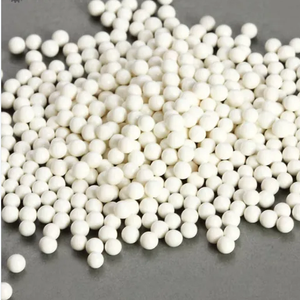

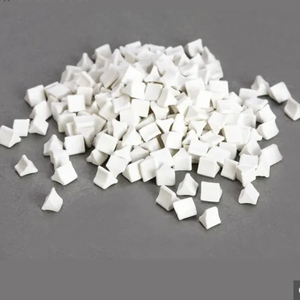





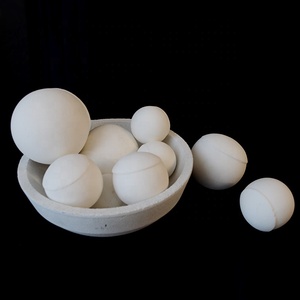








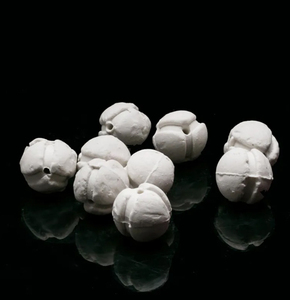

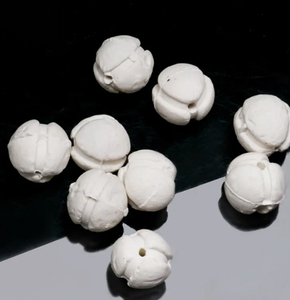





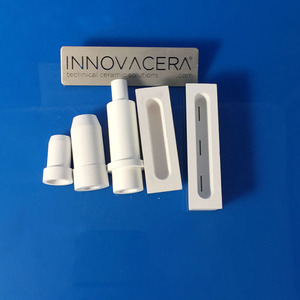


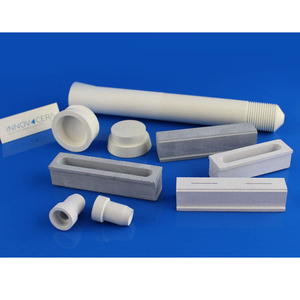

















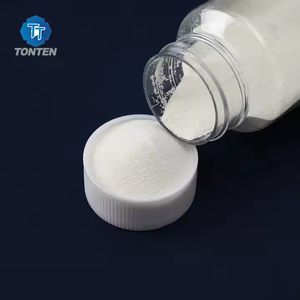
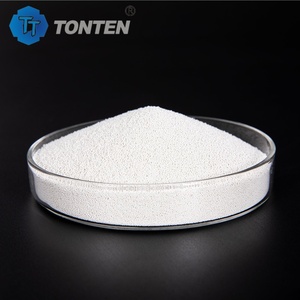

Ceramic blasting media mainly comes in different grades, sizes, and compositions to fit particular industrial requirements. The types of ceramic blasting media are as follows:
Alumina Ceramic Media
This media is made of fine alumina oxide and is very much resistant to abrasion as well as thermal shock. The alumina blasting media is normally utilized for cleaning, polishing, and surface preparation on such hard metals as steel and titanium. It also, comes in a number of sizes, ranging from very fine to coarse, which makes it ideal for different applications.
Zirconia Ceramic Media
This media is generally made of zirconium oxide. As a result, it comes with increased durability and density. In most instances, zirconia blasting media is preferred for its polishing and grinding capabilities. This is especially on metals and other hard materials such as glass and ceramics. Moreover, the media's refinement offers a smooth finish, which makes it ideal for the optical and fine mechanical industry.
Ceramic Tumble Media
Usually, this media is used mainly in vibratory and tumbling machines. In such machines, the media flows over the workpieces in an abrasive action that takes place between both the media and the parts. This type of media may be in different shapes such as porcelain stones, chips, and cylinders all for the purpose of achieving an effective surface finish. The ceramic tumbling media can be used in narrow spaces and on intricate parts that require a smoother finish.
Porcelain Blasting Media
The media normally consists of a high-purity porcelain clay that is formed into small beads or granules. The ceramic blasting media is less abrasive compared to alumina and zirconia media. Moreover, porcelain media is mainly used for delicate parts which require cleaning and smoothing without significantly damaging the surface.
Custom Ceramic Media
To cap it, ceramic media can be specially formulated based on a certain client's requirement. This may include specific shapes, sizes, or compositions. Moreover, custom media is a typical support in niche industries. Here, unique blasting needs cannot be normally met by standard media. Typically, formulations could depend on factors like particle shape, hardness, and future resistance to chemical interactions with certain materials.
Automotive Industry
Manufacturers in the automotive industry prefer ceramic blasting media for surface preparation and cleaning of engine components, cylinder heads, and other critical parts. Also, alumina and zirconia media have a great ability to remove rust, scale, and old paint from these hard surfaces. Therefore, making them suitable for pre-treatment processes that ensure better adhesion of paints and protective coatings.
Aerospace Industry
The aerospace industry relies on ceramic media for its precision and durability applications. Mostly, these are used to clean and prepare aircraft components that include turbine blades and landing gear. In addition, zirconia media is usually preferred because of its resistance to wear. This resistance guarantees a long lifespan, especially in high-volume environments such as aerospace manufacturing.
Foundries and Metalwork
Ceramic blasting media are quite helpful in foundries where it works as an efficient means to prepare casting surfaces. Normally, the media aids in removing sand, slag, and oxides. Therefore, leading to improved surface quality before machining or coating takes place. They are also used in metalworking facilities for cleaning and finishing metal parts. In this case, the media's non-metallic composition means that there will be no contamination of the metal surfaces.
Electronics Industry
The electronics industry usually needs precision and cleanliness in its finishing processes. To achieve this, it often employs ceramic blasting media. For instance, it is widely used in the preparation of circuit boards and other delicate components. More importantly, porcelain media is ideal for cleaning these surfaces without inflicting any damage to the sensitive materials that are used in the making of these components.
Oil and Gas Industry
Ceramic blasting media find great application in the oil and gas industry. Users mostly apply it for cleaning pipeline interiors and exterior surfaces. In this case, media such as alumina effectively remove corrosion, scales, and other contaminants. Usually, this prepares the pipelines for coating or further processing. Also, its ability to perform well in extreme conditions guarantees efficiency in these rugged environments.
Jewelry and Watchmaking
The jewelry and watchmaking industries require a smooth finish on their intricate components. In this case, ceramic tumbling media come in handy. Usually, it gently polishes metal parts, stone inlays, and even precious metals. This gives a high luster without affecting the detailed engravings or the fine work that was put into making them.
Medical Industry
The medical industry has its own unique needs that involve cleaning and preparing components such as implants and surgical instruments. This is where ceramic blasting media fits in perfectly. Media like alumina is preferred for its ability to provide a clean, residue-free surface that is critical for ensuring sterility and biocompatibility. It also plays a major role in preparing implants for their smooth finishes that ensure patient comfort.
Ceramic media usually comes with several distinct features that make them ideal for different surface preparation and finishing tasks. Below are some of these key features:
Durability
Ceramic blasting media is such extremely durable. Usually, its hardness comes from berween of its materials, such as alumina and zirconia. They are thus able to withstand repeated impacts without in anyway breaking down quickly. This consumption rate can be compared to softer materials like glass or garnet. Further, their extended lifespan means less frequent replacements. Henceforth, lower operating costs as well as increased efficiency.
Uniform Particle Size
Ceramic blasting media typically comes in specially graded particle sizes. These range from fine to coarse. Usually, such uniformity ensures consistent results as far as surface finishing is concerned. Also, selection of particle size has a direct influence on the extent of surface roughness. Moreover, it can affect the rate of material removal. Therefore, this makes the blasting media highly customizable to meet specific project requirements.
Non-metallic Composition
Typically, ceramic media is such non-metallic. Just to be specific, this composition helps to minimize the risk of contaminating the blasted surfaces with metal residues. It is a great advantage in industries such as aerospace, electronics, and medical. Normally, these industries require such ultra-clean surfaces to maintain quality and uphold safety standards.
Versatility
Ceramic media for blasting is highly versatile and can be applied on a variety of materials. These include metals, glass, and even plastics. It also works exceedingly well during both cleaning and finishing processes. Mostly, it makes easy to switch between different tasks without the need for drastically changing the equipment. This adaptability makes it indispensable for manufacturing and maintenance environments that usually have diverse needs.
Low Dust Generation
Usually, when ceramic blasting media is compared to some other blasting abrasives, it generates less dust. This is because the particles tend to wear down slowly and uniformly. In addition, lower dust levels contribute to better air quality in the work environment. They also help to reduce filtration costs and allow compliance with the environmental regulations that are put in place.
Eco-friendly
Ceramic media can often be used multiple times before the need for replacement arises. Mostly, it reduces waste generation as well as lowers the environmental impact. Also, many ceramic media formulations are designed to be free of heavy metals and other hazardous substances. Therefore, they pose minimal risk to environmental health.
Material Composition
Choose the blasting media based on its material composition. Normally, porcelain and alumina media are the most preferred. They are a result of the usage that normally requires metal surfaces with precision finishes. On the other hand, zirconia media is used for tougher materials because of its exceptional durability. This property makes it ideal for extended blasting operations.
Particle Size and Shape
Particle size and shape are critical since they directly affect the blasting efficiency as well as the quality of the surface finish. Smaller, finer particles are usually ideal for such delicate operations as polishing. Counter to this, larger particles are effective in quickly removing heavy contaminants or stocks from hard surfaces. Furthermore, angular particles provide an aggressive cut. On the other hand, rounded particles give a smoother finish. Therefore, select a size and shape that will meet a given specific application requirement.
Hardness
Selecting media hardness is paramount because it dictates how effectively the media will abrade the work surface. Normally, harder media will be usable on softer metals as they do cut harder substrates themselves. For this reason, softer media is ideal for use with harder materials. Focusing on this balance helps in preventing damage to the substrate. In addition, it guarantees a more effective blasting action.
Eco-friendly Composition
Apart from efficacy, the environmental impact of the blasting media cannot be ignored at all. Ideally, go for options that are such eco-friendly. They are normally free of heavy metals and other hazardous pollutants. This practice helps in reduction of environmental pollution and improves the safety of the workers operating in the environment.
Reusability
The potential of ceramic blasting media to be reused multiple times before they break down usually has a huge impact when it comes to cost-effectiveness. Choose media that have high durability so as to minimize the rate of wear. Therefore, it allows for multiple blasting cycles with little basically wastage occurring.
Usually, the main advantage of using ceramic abrasives blasting media is their extreme hardness and durability. Normally, they make them suitable for heavy-duty industrial applications. Moreover, they provide efficient surface preparation. Often, this results in smoother finishes that improve coating adhesion. Most importantly, they do not leave metal residues. Also, they are environmentally friendly since they are often reusable.
Ceramic blasting media usually find a lot of application in the aerospace, automotive, electronics, and medical device industries. Often, they thrive in environments that demand precision and consistency. Normally, they are essential in the foundry and oil and gas industries for surface preparation as well.
The shape of the ceramic particles together with their size greatly influences the surface finish quality. Ideally, angular particles are better at cutting into the surface. On the other hand, rounded particles are better at providing a smooth finish. Also, finer particles result in a more uniform finish. Therefore, this will make it possible to have a polished surface devoid of scratches.
Typically, the longevity of ceramic blasting media depends on factors such as its composition, the material being blasted, and the intensity of the blasting process. Normally, harder media wears down slower. Therefore, this makes it ideal for rigorous tasks. Also, blasting softer materials extends the media’s life as it causes less wear.
Usually, ceramic sandblasting media can be customized to fit specific applications. Often, parameters like particle size, shape, and material composition can be specially adjusted in order to meet particular requirements. Therefore, this flexibility allows ideal optimization for distinct industrial needs. Henceforth, it makes certain that there will always be effective performance and efficiency.